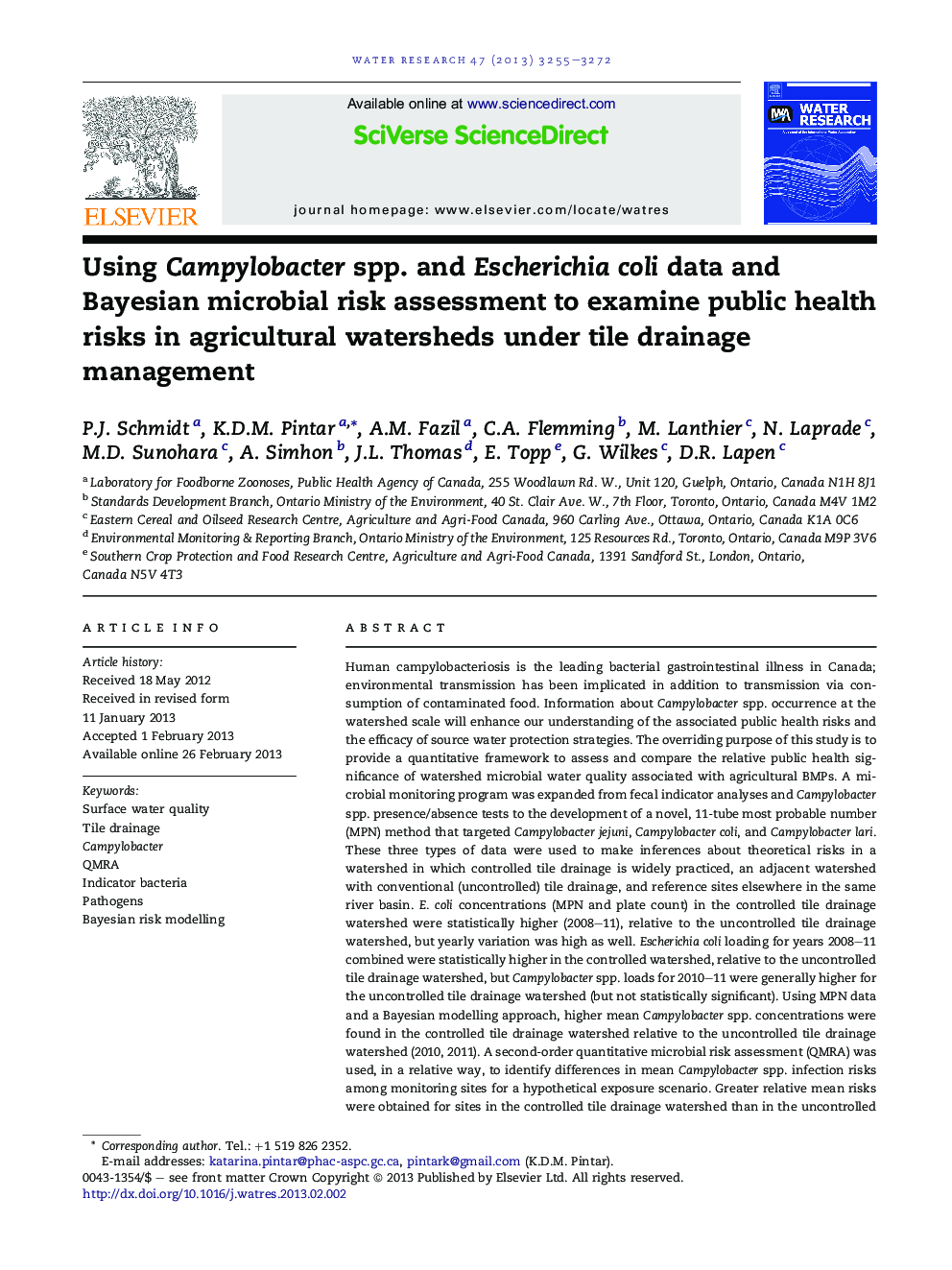| کد مقاله | کد نشریه | سال انتشار | مقاله انگلیسی | نسخه تمام متن |
|---|---|---|---|---|
| 4481792 | 1316834 | 2013 | 18 صفحه PDF | دانلود رایگان |

Human campylobacteriosis is the leading bacterial gastrointestinal illness in Canada; environmental transmission has been implicated in addition to transmission via consumption of contaminated food. Information about Campylobacter spp. occurrence at the watershed scale will enhance our understanding of the associated public health risks and the efficacy of source water protection strategies. The overriding purpose of this study is to provide a quantitative framework to assess and compare the relative public health significance of watershed microbial water quality associated with agricultural BMPs. A microbial monitoring program was expanded from fecal indicator analyses and Campylobacter spp. presence/absence tests to the development of a novel, 11-tube most probable number (MPN) method that targeted Campylobacter jejuni, Campylobacter coli, and Campylobacter lari. These three types of data were used to make inferences about theoretical risks in a watershed in which controlled tile drainage is widely practiced, an adjacent watershed with conventional (uncontrolled) tile drainage, and reference sites elsewhere in the same river basin. E. coli concentrations (MPN and plate count) in the controlled tile drainage watershed were statistically higher (2008–11), relative to the uncontrolled tile drainage watershed, but yearly variation was high as well. Escherichia coli loading for years 2008–11 combined were statistically higher in the controlled watershed, relative to the uncontrolled tile drainage watershed, but Campylobacter spp. loads for 2010–11 were generally higher for the uncontrolled tile drainage watershed (but not statistically significant). Using MPN data and a Bayesian modelling approach, higher mean Campylobacter spp. concentrations were found in the controlled tile drainage watershed relative to the uncontrolled tile drainage watershed (2010, 2011). A second-order quantitative microbial risk assessment (QMRA) was used, in a relative way, to identify differences in mean Campylobacter spp. infection risks among monitoring sites for a hypothetical exposure scenario. Greater relative mean risks were obtained for sites in the controlled tile drainage watershed than in the uncontrolled tile drainage watershed in each year of monitoring with pair-wise posterior probabilities exceeding 0.699, and the lowest relative mean risks were found at a downstream drinking water intake reference site. The second-order modelling approach was used to partition sources of uncertainty, which revealed that an adequate representation of the temporal variation in Campylobacter spp. concentrations for risk assessment was achieved with as few as 10 MPN data per site. This study demonstrates for the first time how QMRA can be implemented to evaluate, in a relative sense, the public health implications of controlled tile drainage on watershed-scale water quality.
Map of the experimental controlled (CTD) and uncontrolled (UCTD) tile drainage watersheds. The grey shade codes delineate tile drainage catchment areas.Figure optionsDownload high-quality image (257 K)Download as PowerPoint slideHighlights
► Human campylobacteriosis can be transmitted through the environment.
► This study provides a novel investigation of land use management on Campylobacter spp. in surface water.
► Risk assessment was used to identify water monitoring requirements in the context of public health.
► Second-order modelling was used to address variability and uncertainty in a risk framework.
► The public health risk framework is heuristic, and can be used to understand issues that influence water quality.
Journal: Water Research - Volume 47, Issue 10, 15 June 2013, Pages 3255–3272